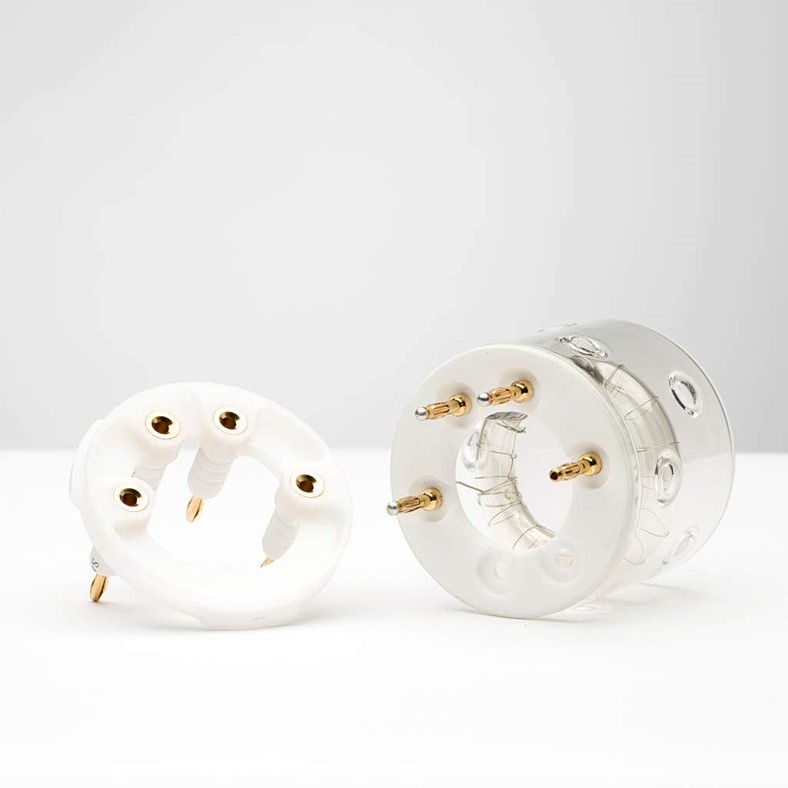- Messages
- 509
- Name
- Owen
- Edit My Images
- No
Someone may find this useful or maybe just interesting. Remember Godox's first go at the AD600? They seemed to forget to factor in any kind of mount for modifiers and then slapped on a Bowens mount which was then apparently too far forward, meaning the flash tube was too recessed into any modifier you cared to attach to the light.
Well, I needed another portable 600J light and there's no way I'm paying £700 for the current offering with its proprietary mount, so I bought a very lightly used AD600BM via eBay. I figured someone must have addressed the recessed bulb issue by now and sure enough, a company called Turtlerig in the USA sells a bulb spacer, so I bought one.
Last week I tested the light, with and without the spacer, with 3 different 7" reflectors and a 120cm octa-box. For these tests, the meter was 2m away, and the light was fired on full power. I took several readings, moving the meter around the centre spot, and took the median value in each case. Here are the results:-
Here are the light patterns generated by the reflectors with and without the spacer, and a heavily underexposed image of the soft-box with contrast enhanced to show the pattern (processing synced between both soft-box front images). Bulb flash images were taken at reduced power - 1/64 + a third.
The cone reflector results are noticeably different. This highly polished reflector is one of those marketing maximizers for LED lights and it came with an SL200 LED light. It has a hotspot in the middle. Notice how this is pretty much eliminated by moving the bulb forward, suggesting it is no longer in the place it should be (the hot spot is desirable for this reflector as it allows better numbers for the marketing brochure). Adding the spacer also seems to have introduced a dark crescent on the bottom left with this modifier. The rest are just dimmer as far as I can tell from these tests.
The softbox front panel appears to have better coverage with the bulb further forward, and, from these results, I think this is the only real advantage of adding the spacer. Overall, light output is reduced by around 1 stop, except when used with a large softbox. The light patterns are worse, or more or less the same: just dimmer. On the whole, my conclusion is the bulb on the AD600B is actually in the right place, for most purposes, but you might consider adding a spacer if you use it with a softbox a lot, and you're striving for the most even light across the front panel.
Well, I needed another portable 600J light and there's no way I'm paying £700 for the current offering with its proprietary mount, so I bought a very lightly used AD600BM via eBay. I figured someone must have addressed the recessed bulb issue by now and sure enough, a company called Turtlerig in the USA sells a bulb spacer, so I bought one.
Last week I tested the light, with and without the spacer, with 3 different 7" reflectors and a 120cm octa-box. For these tests, the meter was 2m away, and the light was fired on full power. I took several readings, moving the meter around the centre spot, and took the median value in each case. Here are the results:-
| Modifier | Without Spacer | With Spacer |
|---|---|---|
| Coreflash D300 reflector | f/20 | f/16 |
| Lencarta SF600 reflector | f/20 | f/14 |
| Godox "cone" reflector | f/22 | f/14 |
| 120cm Octa | f/13 | f/13 |
Here are the light patterns generated by the reflectors with and without the spacer, and a heavily underexposed image of the soft-box with contrast enhanced to show the pattern (processing synced between both soft-box front images). Bulb flash images were taken at reduced power - 1/64 + a third.
| Modifier | Without Spacer | With Spacer |
|---|---|---|
| Bulb position | 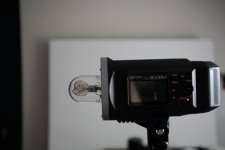 | 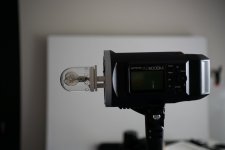 |
| Bulb flash | 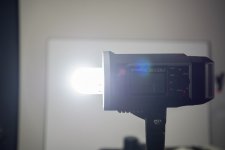 | 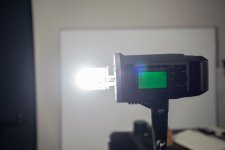 |
| Coreflash D300 reflector | 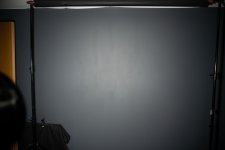 | 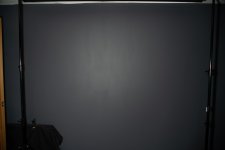 |
| Lencarta SF600 reflector | 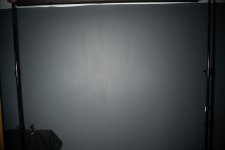 | 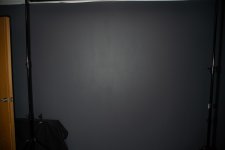 |
| Godox Cone reflector | 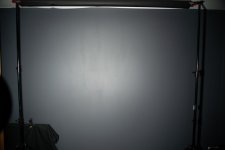 | 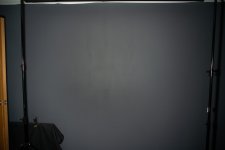 |
| 120cm Octa image | 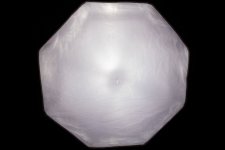 | 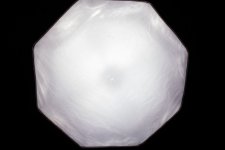 |
The cone reflector results are noticeably different. This highly polished reflector is one of those marketing maximizers for LED lights and it came with an SL200 LED light. It has a hotspot in the middle. Notice how this is pretty much eliminated by moving the bulb forward, suggesting it is no longer in the place it should be (the hot spot is desirable for this reflector as it allows better numbers for the marketing brochure). Adding the spacer also seems to have introduced a dark crescent on the bottom left with this modifier. The rest are just dimmer as far as I can tell from these tests.
The softbox front panel appears to have better coverage with the bulb further forward, and, from these results, I think this is the only real advantage of adding the spacer. Overall, light output is reduced by around 1 stop, except when used with a large softbox. The light patterns are worse, or more or less the same: just dimmer. On the whole, my conclusion is the bulb on the AD600B is actually in the right place, for most purposes, but you might consider adding a spacer if you use it with a softbox a lot, and you're striving for the most even light across the front panel.

